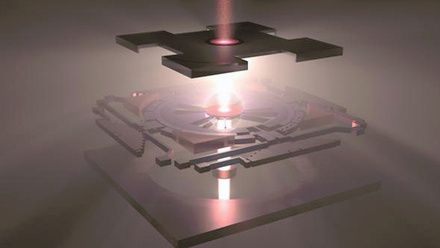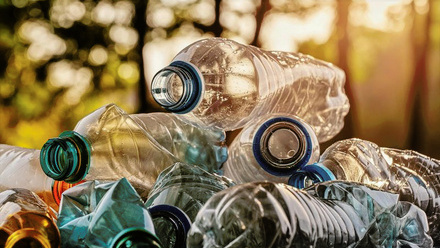Stamp of sustainability? Revised EU Construction Product Regulations
natureplus e.V. organised a series of events on the shifting legislative landscape for construction products in Europe. Sarah Morgan reports.

The EU’s upcoming revision of the Construction Product Regulation (CPR) is due for adoption in April 2024 and aims to harmonise sustainability standards for construction products.
natureplus e.V., a collaboration of building professionals, experts, and fellow not-for-profit organisations in several European countries, campaigns for change in the building industry. It organised a series of events, with support from the UK’s Alliance for Sustainable Building Products (ASBP), to discuss emerging product regulations and the opportunities this might present for bio-based and circular construction materials.
State of play
The revised regulations for the EU’s construction products aim to:
- Ensure everything is in one place – all product information and information on environmentally relevant properties will be found in one place in the future, with the combined declaration of performance and conformity.
- Reduce bureaucracy by providing digital solutions – in the future, product information will be provided digitally via the digital product pass and can then be read directly via a smartphone on the construction site. This means that the content of the CE marking can be reduced to the bare minimum.
- Accelerate the process of standardising construction products – by providing the European Commission and all those involved in standardisation with a work plan with clear deadlines and rules.
- Promote future technologies – such as 3D-printed building products.
- Incentivise greater sustainability – including the reuse of building products as part of the circular economy.
- Simplify procedures – notably for small-to-medium sized enterprises.
- Clearer transition periods – between the old and revised regulations.
The European Parliament is expected to formally confirm the final text at the April plenary session in Strasbourg. The revised regulation is expected to be published by July/August 2024.
All the speakers at the natureplus events were positive about the new CPR on the whole, though some reservations and criticisms were also expressed.
There was concern the new legislation will be a further barrier to implementing the sustainability EU CE marking.
The existing seven-point criteria for a CE marking is being extended to eight, with the sustainability-based criteria subdivided into sustainability and poisonous and/or hazardous substances criteria. There were tentative observations about the structure and potential of the new criteria in the legislation.
There is some question about whether the stipulations for the CE marking will be made mandatory or simply voluntary for all aspects of the agreed sustainability criteria, and this will depend on decisions by each individual member state in the finalisation process.
Sarah Richter of Bau EPD GmbH (the accredited body for Environmental Product Declarations verification), who has been commenting on the CPR drafts as the Austrian Member State representative, was not optimistic that all Member States would opt for mandatory criteria for the CE marking. However, she hoped the majority would agree for the suggested sustainability criteria to be mandatory.
The choices of individual Member States on the enforcement of each area of the suggested criteria will dictate the strength and potential for this proposed legislation.
Phillippe Moseley, Policy Officer from the European Commission, meanwhile, drew attention to elements of the CPR that relate to reuse and remanufacture of products.
These include the introduction of a harmonised standard to permit second life, requirements to provide protocols for disassembly and information on reparability, and creating closed material circles that ban the destruction of materials.
In doing so, legislators hope to bring clarity to encourage financial investment in reuse projects and this will, in turn, also help reuse initiatives like those championed by the ASBP. There is currently no clear organised structure for achieving their aims on a wider scale.
The speakers outlined how the EN15804 product declaration is specifically also up for review, with stakeholders able to feed into this negotiation through their member state representatives. Although, it was noted that those working in more climate-intensive industries need to act quickly as this area of the legislation is being tackled first and some areas have already been loosely agreed.
Down to earth

At the event, it was suggested that the development of ‘greener’ certification criteria could benefit companies like BC Materials, a Belgian firm that specialises in producing raw earth materials, based on excavated earth.
Anton Maertens from BC Materials presented the technology, highlighting that this resource was circular and endlessly reusable, and abundantly available as so much waste earth is generated by other projects. Maertens cited the figure of 37Mt of extracted earth per year, normally dumped in mines and quarries in Flanders and Walloon in Belgium.
BC Materials’ projects could repurpose this earth for building construction, using existing industrial infrastructure. The solution intervenes in the waste earth cycle at the transport stage, diverting the waste to their site, where they can produce earth plasters, rammed earth and earth blocks on the spot from clay, silt and sand.
They claim the blocks have good acoustic performance, offer regulation of indoor humidity, and are VOC and pollutant free.
They admit the current drawback is an issue with increased cost, though they assert that production at scale 'will drastically reduce costs of materials'. They can currently produce 15-20t per day and are fully scaling up to match increasing demand. An average compressed earth block wall of 14cm thickness is now €43/m², down from formerly €61/m².
Maertens noted that while earth building has a long history in Western Europe, this skillset has been mostly forgotten.
BC Materials organises training programmes for contractors and building professionals as another way of overcoming barriers to this method of construction.
The firm plans to innovate further and make paints and screeds based on the clay, in turn transforming construction into a much more regenerative process.
Time to engage
It was pointed out in the presentations that stakeholders can still feed into the development of the CPR through the Acquis Working Group, which is the first stage of consultation before later being firmed up through the expert-led CEN process.
Richter noted the potential to bring greater clarity to the European market through sustainability accreditation, reflecting that many people still do not know what a lifecycle analysis is, never mind regularly complete them.
The events reflected a general drive for and acceptance of the transition to a circular economy, but there was also widespread acknowledgement that change was coming slowly.
A review of the CPR can be found online.







